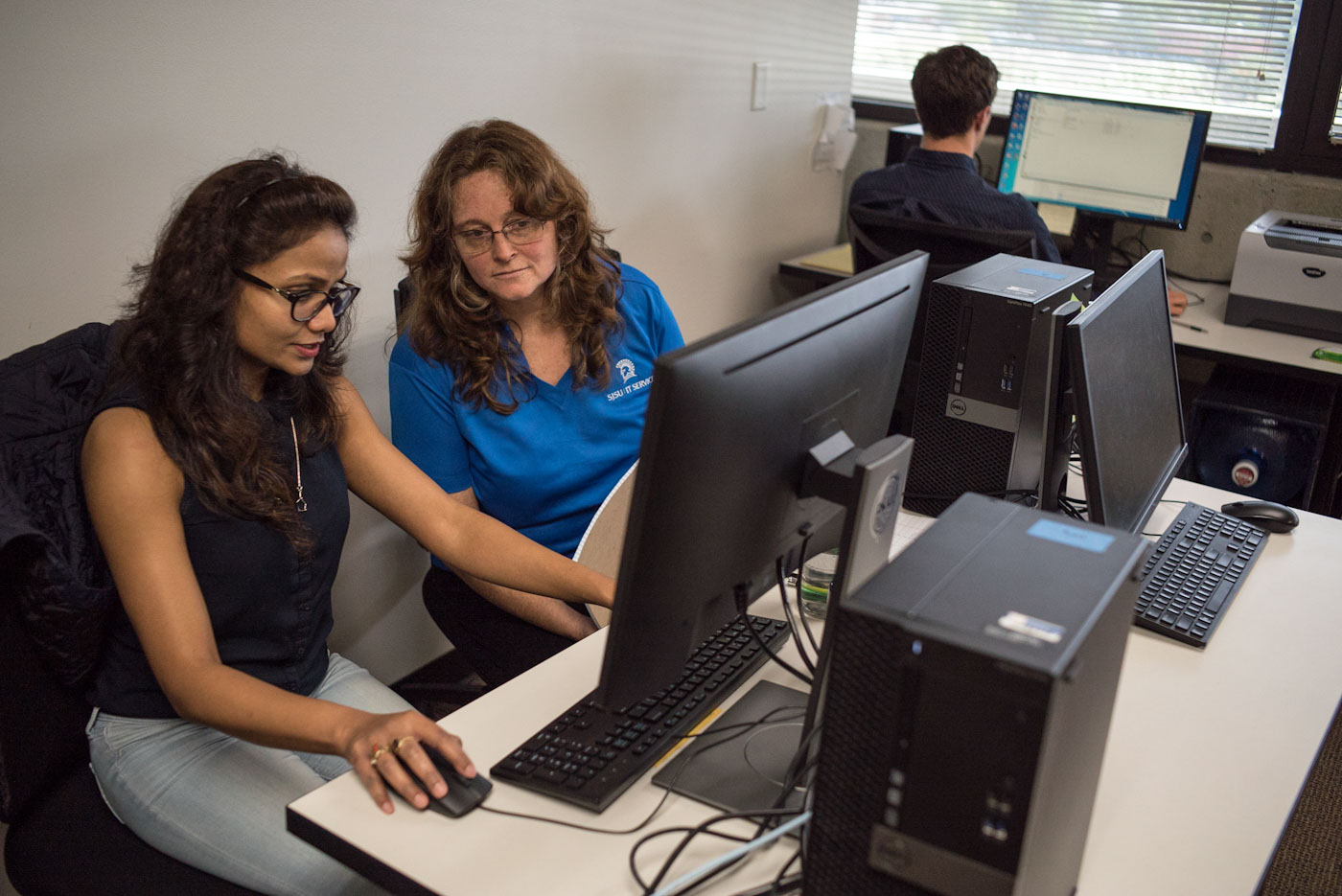Tools for Creating Accessible Content

SJSU has invested in a range of tools that can help you make content more accessible. Expand the links below to learn more about each resource.
Academic Fusion License
All students, faculty, and staff at SJSU are eligible for the CSU Academic Fusion License to install JAWS, ZoomText, or Fusion on their personal (non-CSU) computers. Just sign up using your SJSU email address. Two concurrent installations are permitted on personal machines and machine authorizations can be managed to move licenses where they are needed.
To get this software installed on a campus computer, please contact your IT Desktop Support Technician.
Please see the CSU Academic Fusion Training Resources for support using this tool.
Canvas Accessibility Checker
The Canvas Accessibility Checker provides an additional review of Canvas rich text editor content. Whether it be a Canvas page or instructions in a Canvas assignment, use the Canvas accessibility checker to ensure your content is accessible.Additionally, please view the Canvas Course Accessibility Checklist for more guidance.
Equidox
Equidox is a powerful PDF remediation tool designed to make digital documents accessible to individuals with disabilities. It is user friendly and simplifies PDF remediation such as tagging, alternative text, and logical reading order.
To gain access, email cfeti@sjsu.edu.
Equidox How-to-Videos
Equidox User Guide
Equidox FAQs
Equidox Training (CSU)
Note: Some of the videos may visually look different than your system, due to a recent update of the user interface.
GrackleDocs
Install the GrackleDocs add-on in Google Docs, Google Slides and Google Sheets. It scans your documents and provides guidance on remediating the accessibility issues. These add-ons are only available for SJSU employees.
SJSU Official Syllabus Template
Select SJSU Official Syllabus Template in the left navigation in Canvas. The institutional and departmental sections will be automatically populated and updated when necessary.
Reach out to cfeti@sjsu.edu with any questions and consider working through the Audit your Syllabus Self-Directed Course to review your syllabus from accessibility, cost and diversity perspectives. The course is open to all faculty and staff.
UDOIT Accessibility Tool
UDOIT is an accessibility tool integrated into Canvas. It provides faculty with feedback on the accessibility of their Canvas materials and provides guidance on how to fix accessibility issues. Please note: The UDOIT tab is only viewable by instructors.
See UDOIT for more details and training and consider enrolling in the self-paced Accessible Canvas Courses to learn more about UDOIT and how to remediate other common accessibility issues in higher-education using Adobe Acrobat, Canvas, Google Docs and Microsoft. Enroll in Accessible Canvas Coursesand complete the course for a badge or just use it as a resource!
Email cfeti@sjsu.edu for assistance or to request an instructional design consultation.
Zoom
Here are some ways to increase the accessibility of your Zoom sessions:
• Enable closed captioning for live Zoom sessions
• Provide descriptive alt text for screen sharing
• Encourage students to use virtual backgrounds for privacy
• Offer recorded sessions with transcripts
Use live captioners when needed. See guidance for including live captioners in Zoom (Follow-up with AEC for campus-specific guidelines). Possible text (if needed): Faculty members should configure Zoom to include a live captioner for Deaf and hard of hearing students. Live captions ensure that the content of the meeting is accessible in real-time, promoting inclusivity and providing an equitable learning experience.
Enable sign language interpretation view if a Deaf or hard of hearing student is registered in your course. Empower your students and foster inclusivity by configuring Zoom for ASL interpretation. This ensures that Deaf and hard of hearing students can fully participate in your classes.
Panopto
With Panopto, SJSU employees and students have access to a comprehensive video platform that promotes a more active learning environment with video engagement and recording tools that are accessible to all. Panopto helps meet accessibility requirements for online video content through flexible captioning options, screen reader support, textual and visual searching and more.
Note: Students can only record using Panopto if they are accessing it through a Canvas assignment. Please see How to Create a Panopto Video Assignment.
Social Media Accessibility
SJSU’s Social Media Accessibility Guidelines is a great starting point for creating more accessible social media posts. SJSU Writing Center’s Inclusive Writing Part 1 [pdf] has specific guidance on using inclusive language thereby reaching and connecting with more viewers. Review pages 37-40 of the SJSU Brand Style Guide [pdf] to align your posts with SJSU’s mission.
Email Guidelines
Please refer to Creating Accessible Content for guidance on the general principles required for creating accessible email including font size, color contrast and alternative text. Gmail doesn’t support heading structure, so this is the only time that using larger font size or bold text can work in lieu of proper heading structure. See SJSU Writing Center’s Inclusive Writing Part 1 [pdf] for guidance.
Docusign Accessibility Guidelines
Please refer to Creating Accessible Content for guidance on the general principles required for creating accessible documents. Use the accessibility checker in Docusign to review the document. Select “review” then “check accessibility.” For more information on using Docusign, see Making the Signing Experience Accessible for All.